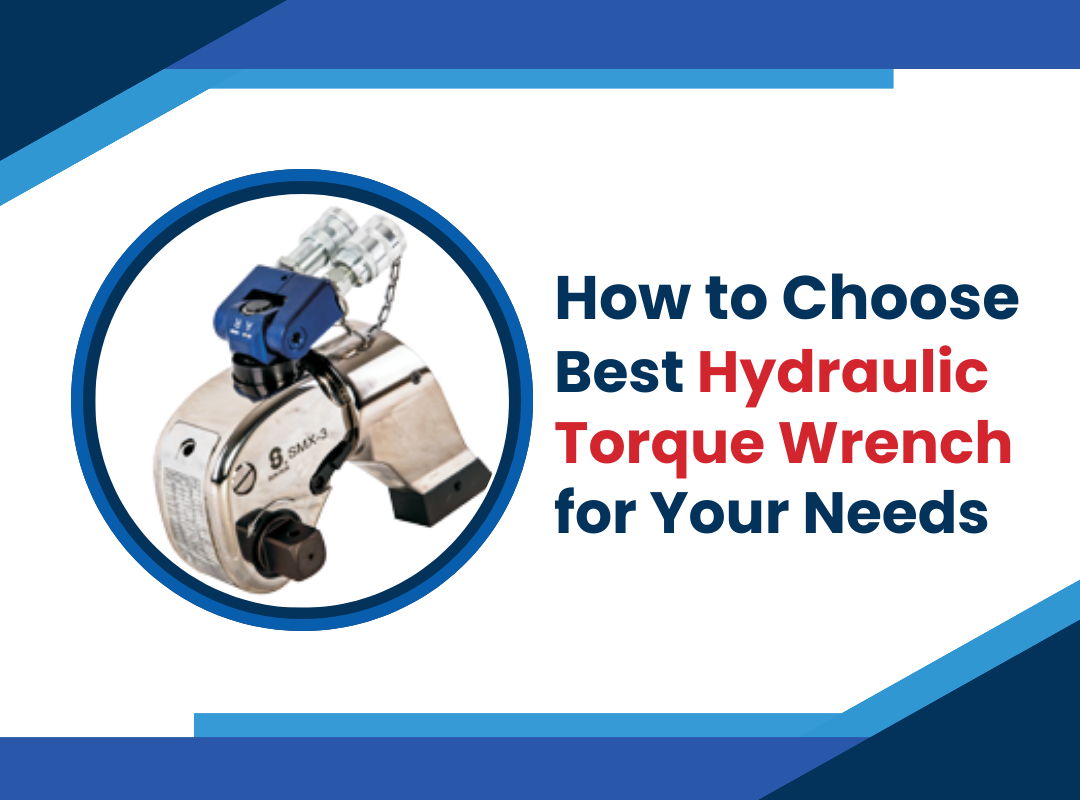The Hydraulic Torque wrench has come on a long way since they were first introduced in the early 1960s. Advancements in technology have created a myriad of features and options to decipher – making it much harder to have confidence in your final selection. The correct purchase of your next torque wrench will not only require you to consider the amount of torque you plan to utilize but also how often you plan to use the tool and what price point will be more comfortable with your wallet! Here are some helpful tips to choose the best hydraulic torque wrench that meets your needs!
What is a Hydraulic Torque Wrench?
You can tighten bolts and nuts with the hydraulic torque wrench, a compact, portable instrument. It’s not just any wrench, though; before you begin working, you can set and release the desired amount of torque or tension using the dial that is adjustable on the handle. Your torque will never be too much or too little thanks to an air-operated valve in the handle that activates a piston inside the socket once it reaches that level of pressure. Also, don’t worry about over-tightening or stripping threads! You won’t have to worry about your work getting damaged or breaking because this kind of wrench will stop tightening when it detects resistance.
Understanding Hydraulic Torque Settings:
Typically, hydraulic torque wrenches are calibrated in kilograms or pounds. Pounds are a unit of mass, whereas kilograms are a unit of force. The formula is straightforward: 1 kilogram equals 9.80665 newtons, and 1 kilogram weighs 4.4482216 ounces. The foot-pound (ft-lb) and Newton meters’ settings are the two that you’ll encounter most frequently on hydraulic torque wrenches (Nm). Always check what your wrench is set to before using it because ft-lb and Nm have different conversion rates in addition to having distinct units of measurement.
Also Read – Different Types of Torque Wrench
Choosing the Right Range
The range of your torque wrench will determine which type you need. If you’re an auto mechanic, then it’s likely that a 20-250 ft.-lb. the range is sufficient. This torque wrench will be able to handle most fasteners and bolts in cars, trucks, and motorcycles. If you work on heavy machinery or need a more precise scale of measurement, then you’ll want to invest in a higher-end torque wrench with a range of 25-250 ft.-lb., 50-250 ft.-lb., 75-250 ft.-lb., or 100-250 ft.-lb.
Tips for Using a Hydraulic Torque Wrench:
- When using a hydraulic torque wrench, it is important that you are aware of its limitations. The device will only be able to accurately measure torque in one direction, so make sure that you know what you need it for before buying.
- If you are looking for a lot of use out of your hydraulic torque wrench, then keep in mind that they can be expensive and won’t last forever if they are overused.
- Always remember to use a torque wrench with care; as mentioned above, it will wear out quickly if used incorrectly or too much – so use it wisely!
- Be sure to store your hydraulic torque wrench properly when not in use by putting it on a non-scratch surface (i.e., foam or plastic) and ensuring that it is covered with an appropriate material such as an oilcloth.
- You should never allow anyone else to use your hydraulic torque wrench because there may be different settings than yours which could result in unintended consequences; this also goes for when trying other brands of wrenches on jobs – just don’t do it!
Where to buy Hydraulic Torque Wrench?
There are several places you can purchase a hydraulic torque wrench or Hydraulic Tools. The first is at your local home improvement store. Second, you can order one online from any number of reputable suppliers. And third, it’s possible to buy a hydraulic torque wrench that’s already been personalized with your name and contact information from a company.
Also Read – Are Torque Wrenches Offering Torque Angle Important?


